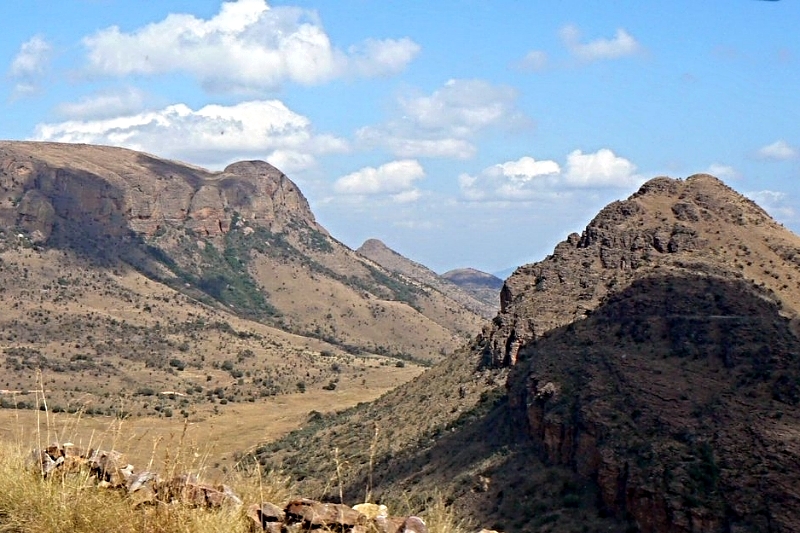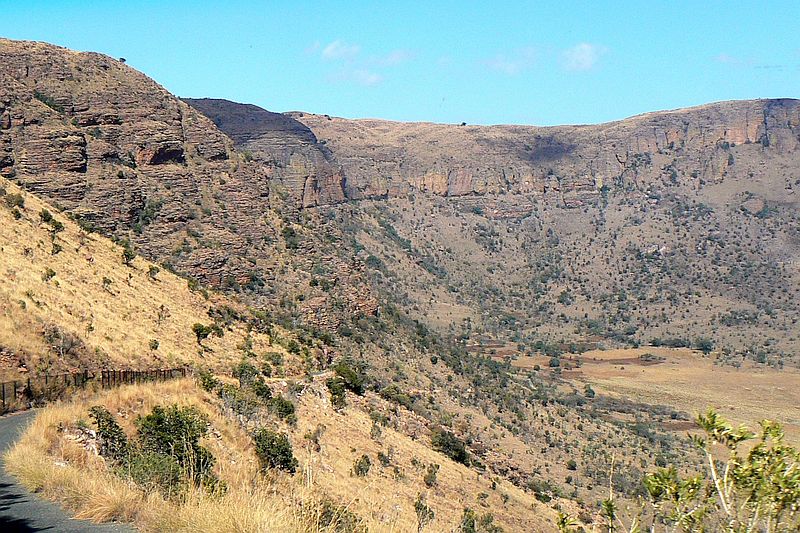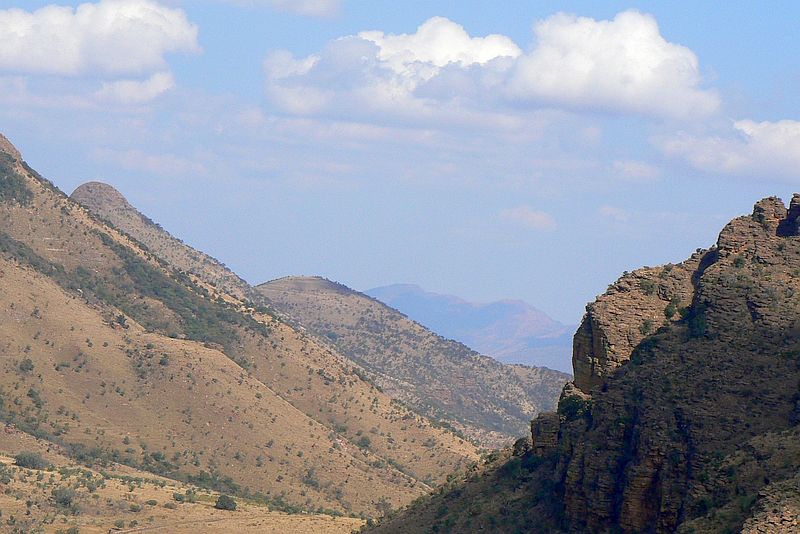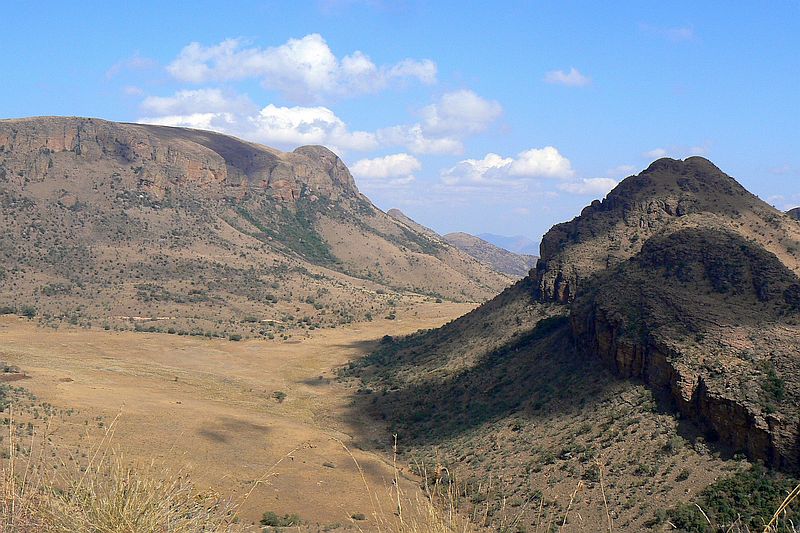200 different Animals for a Non-birder on a Winter Trip?
- Lisbeth
- Site Admin
- Posts: 65818
- Joined: Sat May 19, 2012 12:31 pm
- Country: Switzerland
- Location: Lugano
- Contact:
Re: 200 different Animals for a Non-birder on a Winter Trip?
Cute one  You should have used the "no red eye" button
You should have used the "no red eye" button 

"Education is the most powerful weapon which you can use to change the world." Nelson Mandela
The desire for equality must never exceed the demands of knowledge
The desire for equality must never exceed the demands of knowledge
287. Wall Crab Spider
Wall Crab Spider
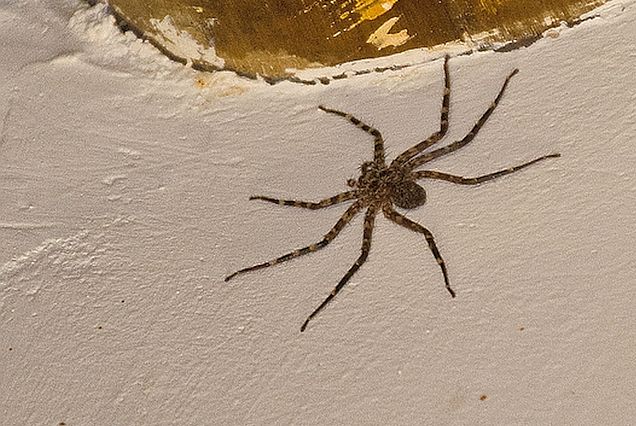
Thabazimbi, 17 August 2014
The Selenopidae are commonly referred to as wall crab spiders or "flatties" because of their dorsally flattened bodies. This family is named after the Greek moon goddess, Selene, due to the moon-like appearance of the eyes.
Selenopidae are well represented in the Afrotropical region. They are nocturnal and free-ranging spiders and are well camouflaged on their usual habitat of rocks and trees where their flattened bodies enable them to retreat into small cracks and crevices. They are also common in houses where they are easily seen, usually inverted, on walls and other surfaces. Here they retreat to small crevices such as those behind skirting boards and picture frames.

Thabazimbi, 17 August 2014
The Selenopidae are commonly referred to as wall crab spiders or "flatties" because of their dorsally flattened bodies. This family is named after the Greek moon goddess, Selene, due to the moon-like appearance of the eyes.
Selenopidae are well represented in the Afrotropical region. They are nocturnal and free-ranging spiders and are well camouflaged on their usual habitat of rocks and trees where their flattened bodies enable them to retreat into small cracks and crevices. They are also common in houses where they are easily seen, usually inverted, on walls and other surfaces. Here they retreat to small crevices such as those behind skirting boards and picture frames.
- nan
- Posts: 26474
- Joined: Thu May 31, 2012 9:41 pm
- Country: Switzerland
- Location: Central Europe
- Contact:
Re: 200 different Animals for a Non-birder on a Winter Trip?
never... never I will open...........
Kgalagadi lover… for ever
https://safrounet.piwigo.com/
https://safrounet.piwigo.com/
Re: 200 different Animals for a Non-birder on a Winter Trip?
you should not pop in here when I post the only spider, nan 
288. Cape Vulture
Cape Vulture Gyps coprotheres

Marakele National Park, 17 August 2014
Identification: 100-115 cm. Very large vulture with near-naked head and neck. Adult creamy-buff, with contrasting dark flight- and tail-feathers. Pale buff neck-ruff. Underwing in flight has pale silvery secondary feathers and black alula. Yellowish eye, black bill, bluish throat and facial skin, dark neck. Juveniles and immatures generally darker and more streaked, with brown to orange eyes and red neck. Similar spp. White-backed Vulture is smaller and, usually, darker, with more streaking and different wing pattern.
Distribution: Most of South Africa, except arid W, Mozambique and most of Zimbabwe; vagrant to Zambezi Valley.
Status: Locally common, but numbers declining. The Cape vulture has been declining steadily since at least the 1980s, when it was first categorized as Threatened. It was later upgraded to Vulnerable and, in 2015, to Endangered.
Habitats: Mostly mountainous country, or open country with inselbergs and escarpments; less commonly in savanna or desert.
Habits: Highly gregarious at all times; roosts and nests on precipitous cliffs which are white from droppings. Soars out 2-3 hours after sunrise (rarely earlier) to forage over wide area, often well away from mountains; cruises at 26-69 km/h. Aggressive at carcasses.
Food: Carrion, bone fragments; grooves and serrations on tongue enable rapid feeding on soft tissues of carcass.
Breeding: Season: April to July. Nest: Sparse platform of sticks, brush and stems, lined with grass and leaves; sometimes hardly any nest; on cliff ledge. Clutch: 1 egg, very rarely 2. Incubation: 55-58 days by both sexes. Nestling: 140 days, fed by both parents; dependent on parents for up to 221 days after leaving nest.

Marakele National Park, 17 August 2014
Identification: 100-115 cm. Very large vulture with near-naked head and neck. Adult creamy-buff, with contrasting dark flight- and tail-feathers. Pale buff neck-ruff. Underwing in flight has pale silvery secondary feathers and black alula. Yellowish eye, black bill, bluish throat and facial skin, dark neck. Juveniles and immatures generally darker and more streaked, with brown to orange eyes and red neck. Similar spp. White-backed Vulture is smaller and, usually, darker, with more streaking and different wing pattern.
Distribution: Most of South Africa, except arid W, Mozambique and most of Zimbabwe; vagrant to Zambezi Valley.
Status: Locally common, but numbers declining. The Cape vulture has been declining steadily since at least the 1980s, when it was first categorized as Threatened. It was later upgraded to Vulnerable and, in 2015, to Endangered.
Habitats: Mostly mountainous country, or open country with inselbergs and escarpments; less commonly in savanna or desert.
Habits: Highly gregarious at all times; roosts and nests on precipitous cliffs which are white from droppings. Soars out 2-3 hours after sunrise (rarely earlier) to forage over wide area, often well away from mountains; cruises at 26-69 km/h. Aggressive at carcasses.
Food: Carrion, bone fragments; grooves and serrations on tongue enable rapid feeding on soft tissues of carcass.
Breeding: Season: April to July. Nest: Sparse platform of sticks, brush and stems, lined with grass and leaves; sometimes hardly any nest; on cliff ledge. Clutch: 1 egg, very rarely 2. Incubation: 55-58 days by both sexes. Nestling: 140 days, fed by both parents; dependent on parents for up to 221 days after leaving nest.
289. True Cricket
True Cricket
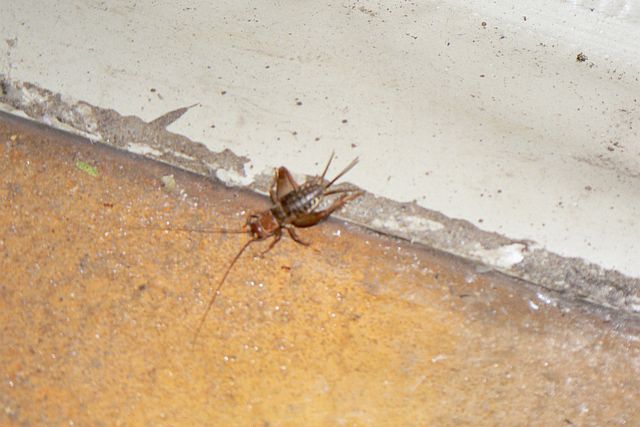
Tembe Elephant Park, 2 September 2014
The True Crickets (Gryllidae) can be distinguished from others by presence of long ovipositor and long cerci in females.
Cerci are sensory organs help the cricket feel its surroundings. This sensory system transduces low frequency air movements near the animal’s body and is
involved in many behaviors including escape from predators, orientation with respect to gravity, flight steering, aggression and mating behaviors.
The ovipositor is used to lay eggs. The long organ allows the cricket to protect her eggs by burying them in the ground.

Tembe Elephant Park, 2 September 2014
The True Crickets (Gryllidae) can be distinguished from others by presence of long ovipositor and long cerci in females.
Cerci are sensory organs help the cricket feel its surroundings. This sensory system transduces low frequency air movements near the animal’s body and is
involved in many behaviors including escape from predators, orientation with respect to gravity, flight steering, aggression and mating behaviors.
The ovipositor is used to lay eggs. The long organ allows the cricket to protect her eggs by burying them in the ground.
290. Domestic Donkey
Domestic Donkey Equus asinus
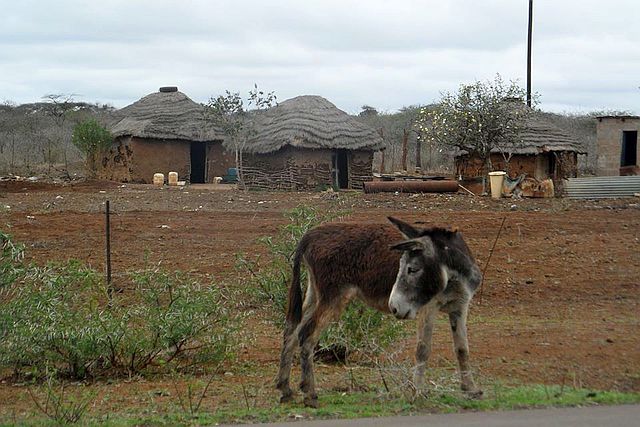
Swaziland, 30 August 2014
There are about 12,000 donkeys in Swaziland. Donkeys do not produce any edible product in Swaziland. They are mainly raised for draught power and for the production of manure.

Swaziland, 30 August 2014
There are about 12,000 donkeys in Swaziland. Donkeys do not produce any edible product in Swaziland. They are mainly raised for draught power and for the production of manure.
- Lisbeth
- Site Admin
- Posts: 65818
- Joined: Sat May 19, 2012 12:31 pm
- Country: Switzerland
- Location: Lugano
- Contact:
Re: 200 different Animals for a Non-birder on a Winter Trip?
"Education is the most powerful weapon which you can use to change the world." Nelson Mandela
The desire for equality must never exceed the demands of knowledge
The desire for equality must never exceed the demands of knowledge



